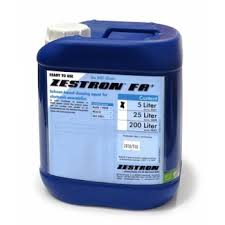In 2025, organizations that effectively Align Sales and Marketing gain a competitive edge by increasing pipeline efficiency and revenue growth. Misalignment between these two critical departments can result in lost opportunities, inconsistent messaging, and wasted resources. Integrating sales and marketing strategies allows businesses to generate high-quality leads, accelerate conversions, and deliver a seamless experience for prospects. Aligning these teams is essential to building a strong and predictable sales pipeline.
The Benefits of Alignment Between Sales and Marketing
Sales and marketing alignment ensures both teams work toward common goals using consistent messaging. When teams operate independently, marketing may produce leads that are not ready for sales, and sales may pursue leads that have not been properly nurtured. Alignment enhances lead quality, shortens the sales cycle, and strengthens customer relationships. In 2025, companies are using data, collaboration, and strategic insights to create a unified approach that drives pipeline growth and business success.
Setting Common Objectives and KPIs
The foundation of alignment is shared goals and key performance indicators. Sales and marketing teams should agree on KPIs, including lead quality, conversion rates, and revenue targets. Common objectives encourage accountability and foster collaboration. Marketing focuses on generating marketing-qualified leads that meet agreed criteria, while sales provides feedback on lead readiness and quality. CRM systems and marketing automation platforms ensure transparency and allow teams to track performance toward achieving shared goals.
Developing a Comprehensive Customer Profile
A unified customer profile is critical for alignment. By combining data from website interactions, email campaigns, social media engagement, and past purchases, sales and marketing teams gain a complete view of prospects. This shared understanding allows teams to craft personalized messaging, prioritize high-value leads, and address the needs of decision-makers. In 2025, predictive analytics and AI tools enhance customer profiles, improving lead conversion rates and pipeline efficiency.
Implementing Account-Based Marketing
Account-Based Marketing (ABM) focuses on high-value accounts and requires close collaboration between sales and marketing. Both teams must identify target accounts, map stakeholders, and create tailored campaigns. ABM emphasizes quality over quantity, helping businesses focus on the leads with the highest conversion potential. Organizations that adopt ABM in 2025 benefit from predictable revenue, stronger client relationships, and a more efficient sales process.
Enhancing Communication Between Teams
Communication is essential to maintain alignment. Regular meetings, joint planning sessions, and shared dashboards ensure both sales and marketing teams stay informed. Collaboration tools like Microsoft Teams, Slack, and integrated CRM systems enable real-time sharing of insights and reduce misalignment. Feedback loops allow sales to report on lead quality while marketing shares campaign results. Continuous communication ensures strategies remain aligned and optimized for pipeline growth.
Leveraging Technology for Alignment
Technology is a key enabler for connecting sales and marketing. Marketing automation platforms, CRM systems, and analytics tools provide insight into lead behavior, scoring, and campaign effectiveness. In 2025, AI-powered solutions offer predictive lead scoring, content recommendations, and automated reporting. Utilizing these tools allows both teams to make data-driven decisions, streamline processes, and maintain coordination toward pipeline and revenue goals.
Personalized Content and Messaging
Personalized content is critical for alignment. Marketing teams should create content for each stage of the buyer journey, while sales teams can leverage this content during prospect engagement. Delivering relevant messaging at the right time nurtures leads and accelerates the sales process. In 2025, interactive content, AI-driven personalization, and video marketing improve engagement and conversion rates. Personalized messaging ensures prospects receive content relevant to their needs, enhancing overall pipeline performance.
Optimizing Lead Management
Effective lead management is a cornerstone of alignment. Marketing teams should qualify leads based on engagement, behavior, and fit. Sales must prioritize high-quality leads and follow up promptly. Clearly defining marketing-qualified leads (MQLs) and sales-qualified leads (SQLs) ensures both teams understand which leads are ready for outreach. Automated workflows and lead nurturing campaigns help maintain engagement and reduce the risk of losing potential opportunities, improving overall pipeline efficiency.
Fostering a Collaborative Culture
Culture plays a crucial role in long-term alignment. Encouraging teamwork, recognizing contributions, and celebrating shared successes strengthen relationships and improve performance. Leadership should actively promote cross-functional initiatives and ensure that both teams are invested in shared objectives. Companies that foster a collaborative culture in 2025 experience higher employee engagement, better customer experiences, and stronger pipeline growth.
Monitoring Performance and Continuous Improvement
Continuous monitoring and optimization are essential to maintain alignment. Teams should review metrics, identify gaps, and implement necessary improvements. This may include refining lead scoring models, updating messaging, or reallocating resources to high-performing channels. Analytics and AI-driven insights provide predictive trends, helping teams take proactive actions. Regular evaluation ensures that sales and marketing remain aligned and focused on pipeline growth.
Integrating Feedback Loops
Feedback loops allow continuous improvement between sales and marketing. Sales provides insights on objections, competitor activity, and market trends, while marketing shares engagement metrics and content performance. Structured feedback loops enable teams to adapt strategies quickly, maintain alignment, and ensure pipeline efficiency. In 2025, feedback processes are essential to sustaining consistent results and achieving growth objectives.
Investing in Training and Development
Ongoing training ensures alignment is maintained over time. Sales teams should understand marketing strategies, while marketing teams need insight into sales processes and buyer behavior. Cross-training initiatives foster collaboration and mutual understanding, increasing overall effectiveness. In 2025, training in AI tools, digital marketing, and analytics is critical for maximizing alignment and enhancing pipeline performance.
Driving Pipeline Growth Through Alignment
By implementing these strategies, organizations can successfully Align Sales and Marketing in 2025 and achieve measurable pipeline growth. Shared goals, unified customer profiles, effective communication, personalized content, and continuous optimization create a coordinated approach to revenue generation. Companies prioritizing alignment will benefit from higher lead conversion, shorter sales cycles, and sustainable business growth.
About Us : Acceligize is a global B2B demand generation and technology marketing company helping brands connect with qualified audiences through data-driven strategies. Founded in 2016, it delivers end-to-end lead generation, content syndication, and account-based marketing solutions powered by technology, creativity, and compliance.


